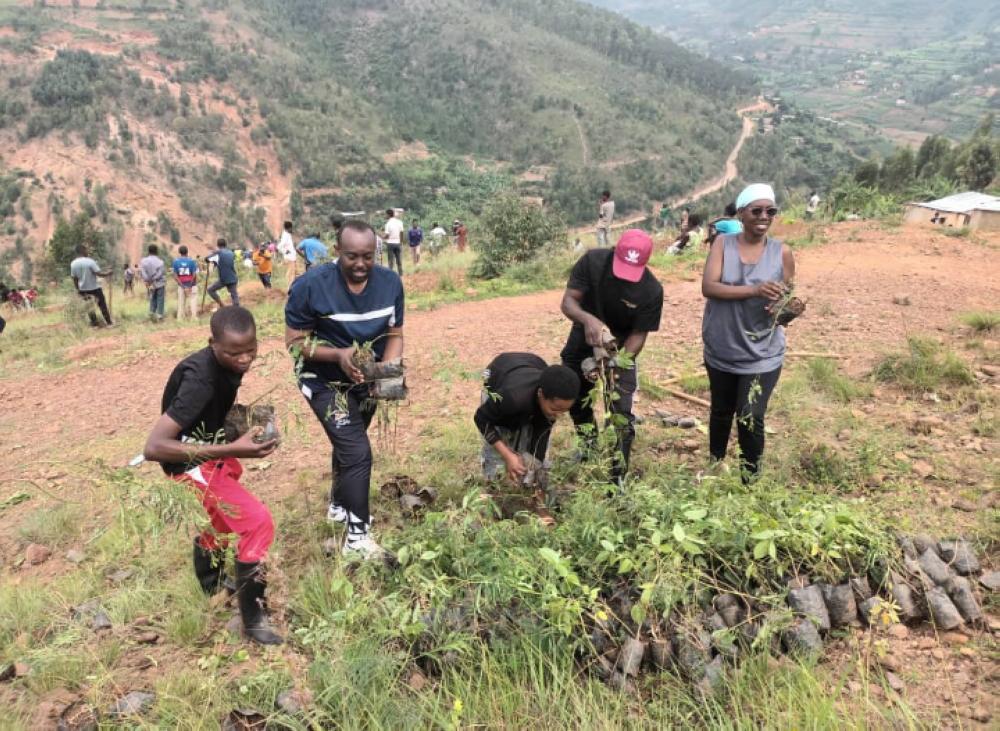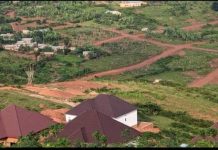Africa-Press – Rwanda. Environment students in partnership with Gasabo district, have committed to plant over 3,000 endangered and native trees to restore degraded forests in Gasabo district.
The five native tree species that are being planted on a hill in Ngara cell, Bumbogo sector include Maesa lanceolata, Entada abyssinica, Albizia adianthifolia, Polyscias fulva and Erythrina abyssinica.
Maesa lanceolata is an ethno-medicinal plant distributed in Central and East Africa.
It has been used as a traditional medicine against bacterial infections in the small intestine and viral infections in the liver and throat, as well as treatment for rheumatic arthritis.
Entada abyssinica is a tree widely spread in tropical Africa.
It is traditionally used to treat coughs, rheumatism, bronchitis, abdominal pains, diarrhea and fever to prevent miscarriage.
Adianthifolia is used as purgative and herbal medicine for diabetes, eye problems, gastrointestinal problems, hemorrhoids, headache, neurodegenerative disorders, reproductive problems in women, respiratory problems, wounds and pain, skin diseases, sexually transmitted infections, and ethnoveterinary medicine.
Biological studies demonstrated that Polyscias extracts and their bioactive compounds possess antibacterial, antifungal, cytotoxic, immuno-stimulant, wound healing, and anti-asthmatic activities.
Erythrina abyssinica is an important ethnomedicinal plant in Africa harboring useful pharmacologically active phytochemicals against various diseases with significant efficacies and minimal toxicity to mammalian cells.
Native tree species are set to be planted in Bumbogo.
Anne Micomyiza, Managing Director of GreenGoal Rwanda Initiative, a youth-led initiative, said that in the next five years, there are plans to install benches on the hill in Bumbogo sector and turn it into the recreational zone.
“The hill can become a recreational and tourist destination where people can sit and rest,” she said.
The site had been degraded and remained vulnerable to soil erosion and landslides.
“The native tree species were on the brink of extinction and we have to use our skills to revive such species,” he said.
“Landslides and soil erosion were posing threats to us on this hill. We hope the risks will be mitigated by the planted trees,” said Emmanuel Ngiruwonsanga, a resident of Bumbogo sector.
Velena Nyirahakizimana, another Bumbogo resident, said that crops were devastated by soil erosion due to a lack of enough trees to curb the erosion.
“A lot of soil has been eroded by heavy rains. The native trees including fruit trees were highly needed,” she said.
The revival of endangered native tree species is part of Rwanda’s plan to restore two million hectares of degraded land and forests by 2030.
44,660 native trees to be planted in Kigali
In the City of Kigali, 20 hectares of forest will be rehabilitated while 44,660 native tree seedlings and 191,714 fruit trees will be planted.
Researchers in Rwanda are tirelessly carrying out experiments on 20 degraded indigenous (native) tree species so as to recommend those that are resistant to drought and can sequester large quantities of carbon dioxide to cope with climate change.
Today, 30.4 percent of Rwanda’s surface area is covered by forests.
During this year’s tree planting season, a total of 26,227,930 agroforestry seedlings, 7,609,374 classic forest seedlings, 1,601,931 fruit trees and 1,014,400 bamboo trees will be planted.
For More News And Analysis About Rwanda Follow Africa-Press






